The Enterprise Content Management Lifecycle - An Ultimate Guide
What is Enterprise Content Management (ECM)?
Enterprise Content Management refers to the systems, strategies, and tools that govern how content is created, stored, discovered, accessed, shared, and archived across an organization. At its core, ECM ensures that the right information reaches the right people internally or externally at the right time, within a secure and compliant framework.
In a modern enterprise, ECM is no longer just about housing documents. It’s the operational backbone for content intelligence helping teams collaborate effectively, meet regulatory standards, and make decisions based on discoverable knowledge assets.
Earlier, ECM meant digital filing cabinets. Today, it’s about orchestrating content that drives outcomes whether it’s enabling a rep to pull up the latest pitch deck mid-call or ensuring a compliance officer can retrieve signed contracts instantly for audit.
Platforms like Paperflite represent this evolution by integrating AI-powered discovery SEEK, immersive content experiences (Collections), and cross-functional access management making ECM both operationally efficient and strategically indispensable.
Why is Content Lifecycle Management Critical in Enterprises?
Because without lifecycle governance, enterprise content turns into digital clutter—unsearchable, non-compliant, and impossible to scale.
Internal use: Aligning content to business function needs (Sales, L&D, IT)
Inside an enterprise, every department generates and consumes content differently.
Sales teams need up-to-date pitch decks and customer stories; L&D teams rely on structured training paths; IT teams manage documentation for systems and integrations.
Lifecycle management ensures content is version-controlled, discoverable by function, and tied to intended use.
For example, Paperflite’s Streams and Permissions allow assets to be neatly grouped by department and only accessible to relevant teams eliminating clutter, chaos, and content duplication.
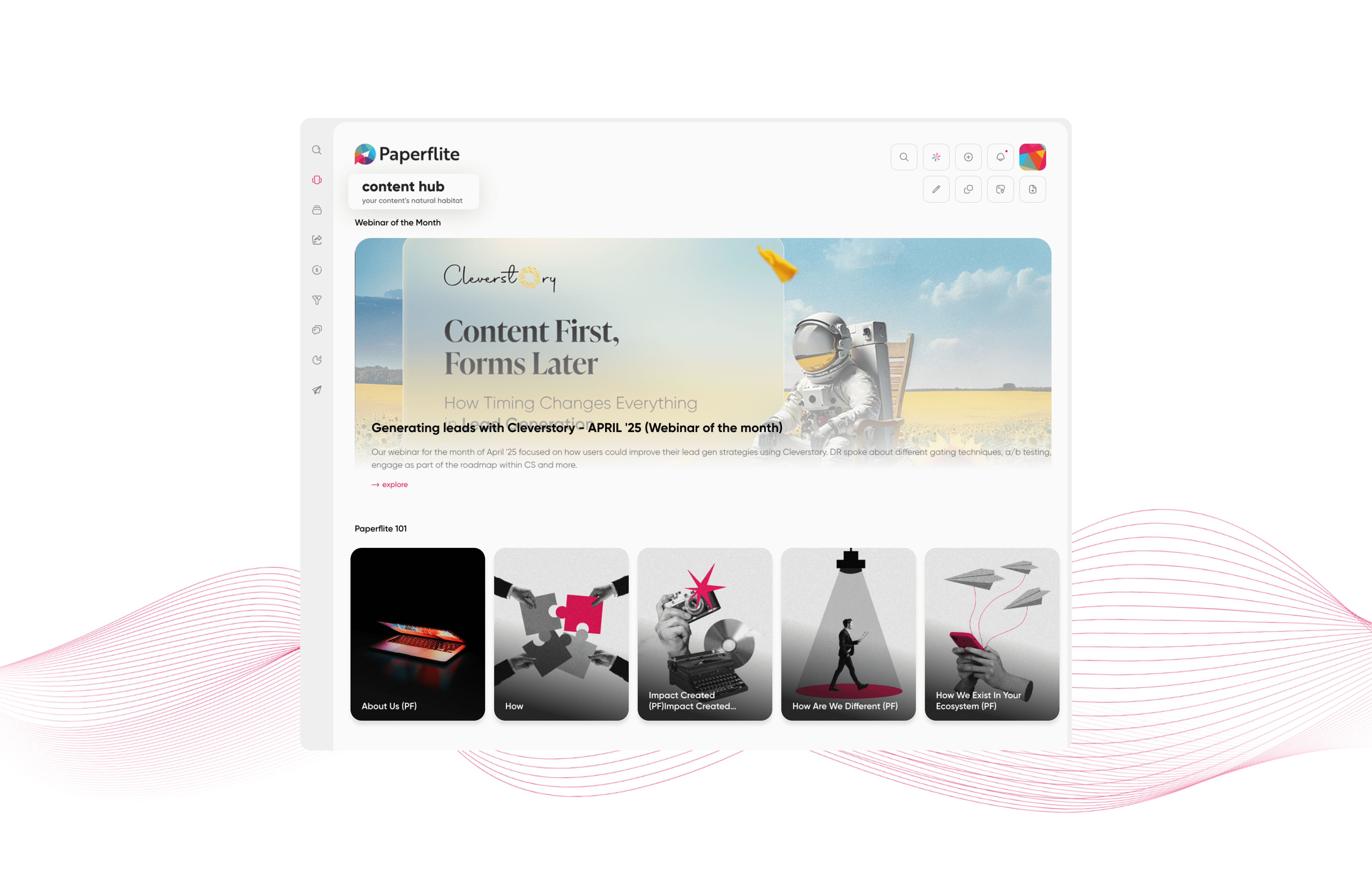
External use: Consistent, compliant experiences for customers and prospects
Externally, organizations must deliver content that is:
- Relevant to the buyer journey
- Timely, adapting to live conversations
- Compliant, especially in regulated industries
With tools like Paperflite’s Collections and Deal Rooms, enterprises can create microsites with handpicked, up-to-date content that reflects the brand while allowing real-time updates—ensuring buyers always see the right message.
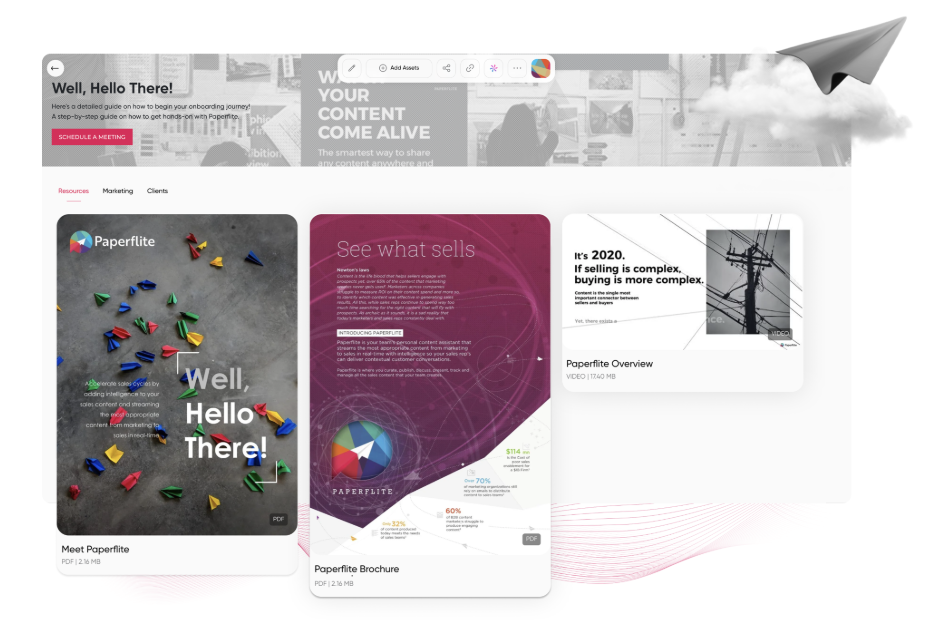
Compliance and audit implications
As content travels through creation, approval, sharing, and archival, maintaining audit trails and access control becomes crucial.
ECM lifecycle management ensures:
- Check-in/check-out controls to prevent editing conflicts
- Content classification and expiry rules
- Full visibility into who accessed what and when
This is especially vital in sectors like finance, pharma, and legal.
What are the Stages of the Enterprise Content Management Lifecycle?
Every piece of content an enterprise creates follows a journey from ideation to retirement. Managing this journey efficiently is at the heart of ECM. Below are the six critical stages of the content lifecycle management:
Content Creation: Desktop-Based Tools and Collaboration
The lifecycle begins at creation.
Teams across departments generate content using familiar tools like Microsoft Word, PowerPoint, Excel, or collaborative platforms like Google Workspace.
This stage includes:
- Drafting internal documentation, customer-facing material, training content, and policies
- Collaborating through shared drives or document platforms
- Applying basic structure like file names, headings, and version indicators
Storage: Centralized Hubs, Indexing, and Metadata Enrichment
After creation, content must be stored in a centralized, secure, and structured repository.
At this stage:
- Documents are uploaded to content repositories such as enterprise drives, intranets, or ECM platforms
- Metadata (tags, owner, department, creation date) is applied to support future retrieval
- Indexing systems catalog content to enable structured search and filtering
Access & Discovery: Role-Based Permissions, Intelligent Search
Not all content should be available to everyone. This stage involves:
- Setting access controls based on roles, departments, or security levels
- Ensuring content can be discovered quickly through metadata, full-text search, and contextual filters
- Balancing discoverability with security especially for sensitive or compliance-bound documents
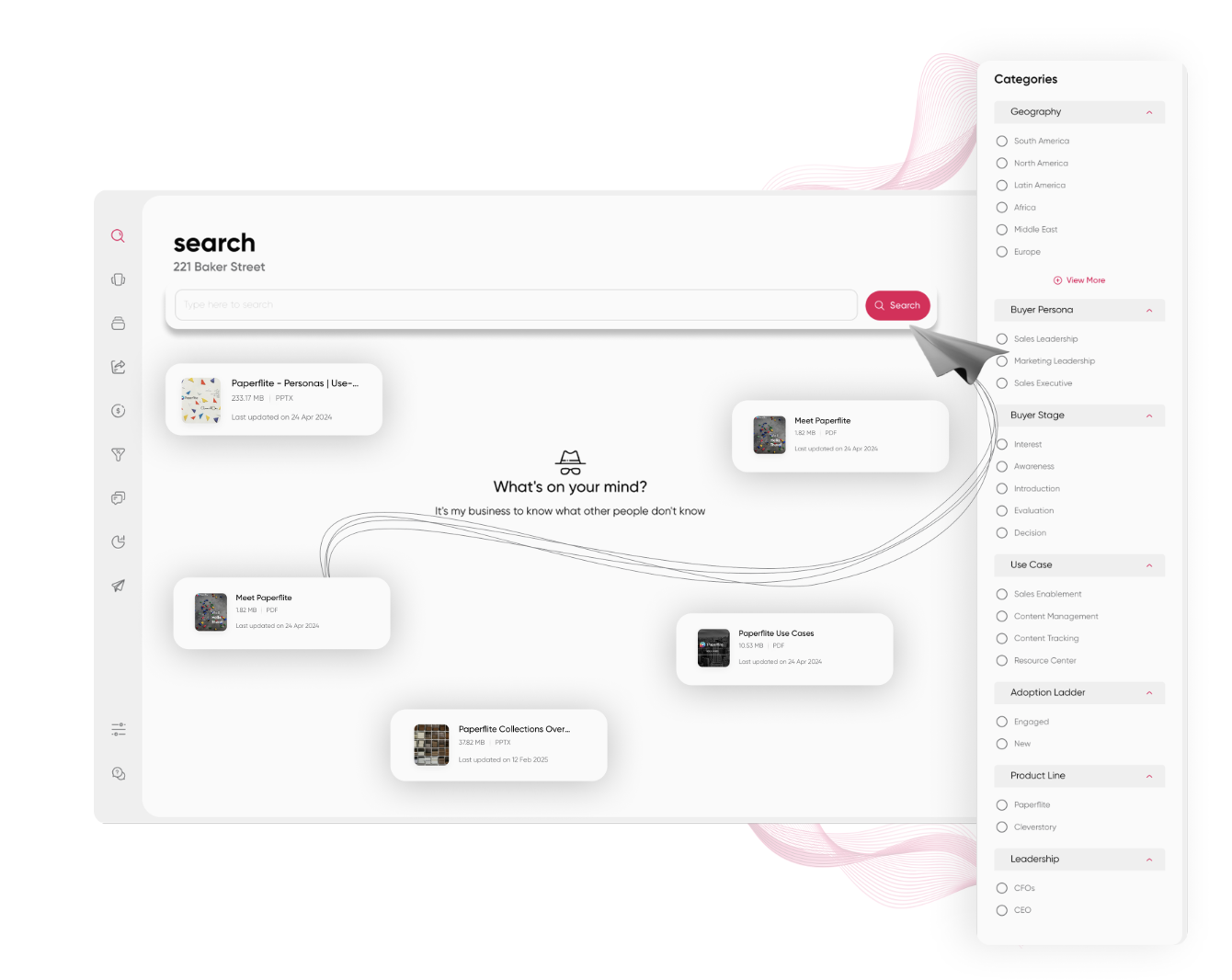
Usage & Distribution: Personalized Delivery, System Integrations
Once content is accessible, it must be delivered efficiently to those who need it both internally and externally.
This includes:
- Distributing content through email, internal portals, sales systems, or learning platforms
- Ensuring versions are current and messaging consistent across channels
- Tracking who received or used the content and in what context (where applicable)
Performance Tracking and Optimization in ECM
A robust ECM platform enables organizations to track how content is accessed, used, and shared—capturing granular metrics on engagement, document usage patterns, and stakeholder interaction.
- These insights help teams identify which materials are most effective, where content may be underperforming,
- helps to refine future assets with continuous feedback loops, ECM supports data-driven content optimization
- This will in turn improve operational efficiency and ensures high-value assets deliver measurable impact.
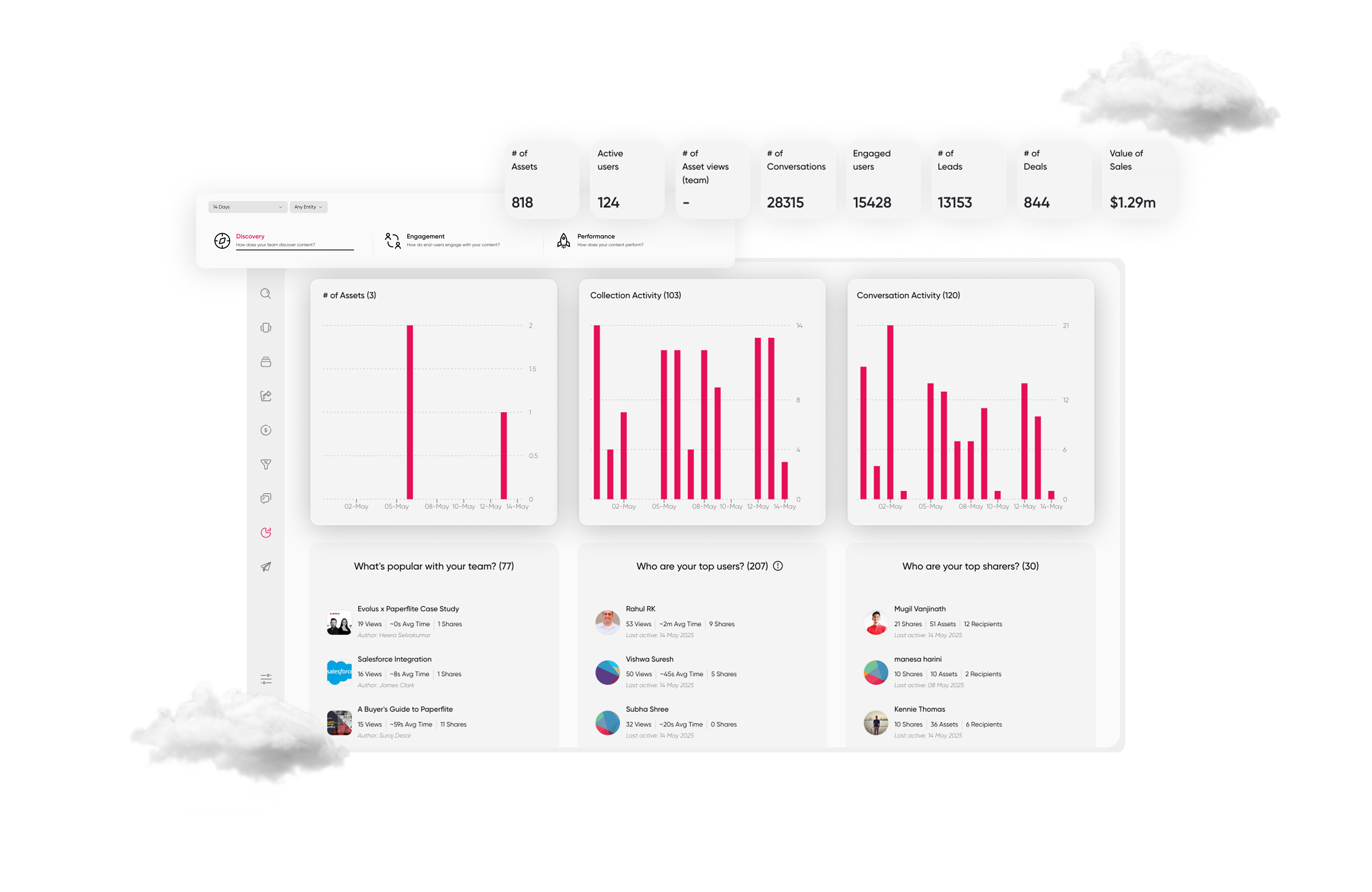
Archival: Secure Long-Term Retention, Rule-Based Management
As content becomes outdated, it moves out of active use but may still be needed for historical reference, audits, or compliance:
- Content is archived under controlled conditions and retention timelines
- It is stored securely, with restricted access and minimal modification permissions
- Metadata remains intact to support retrieval when needed
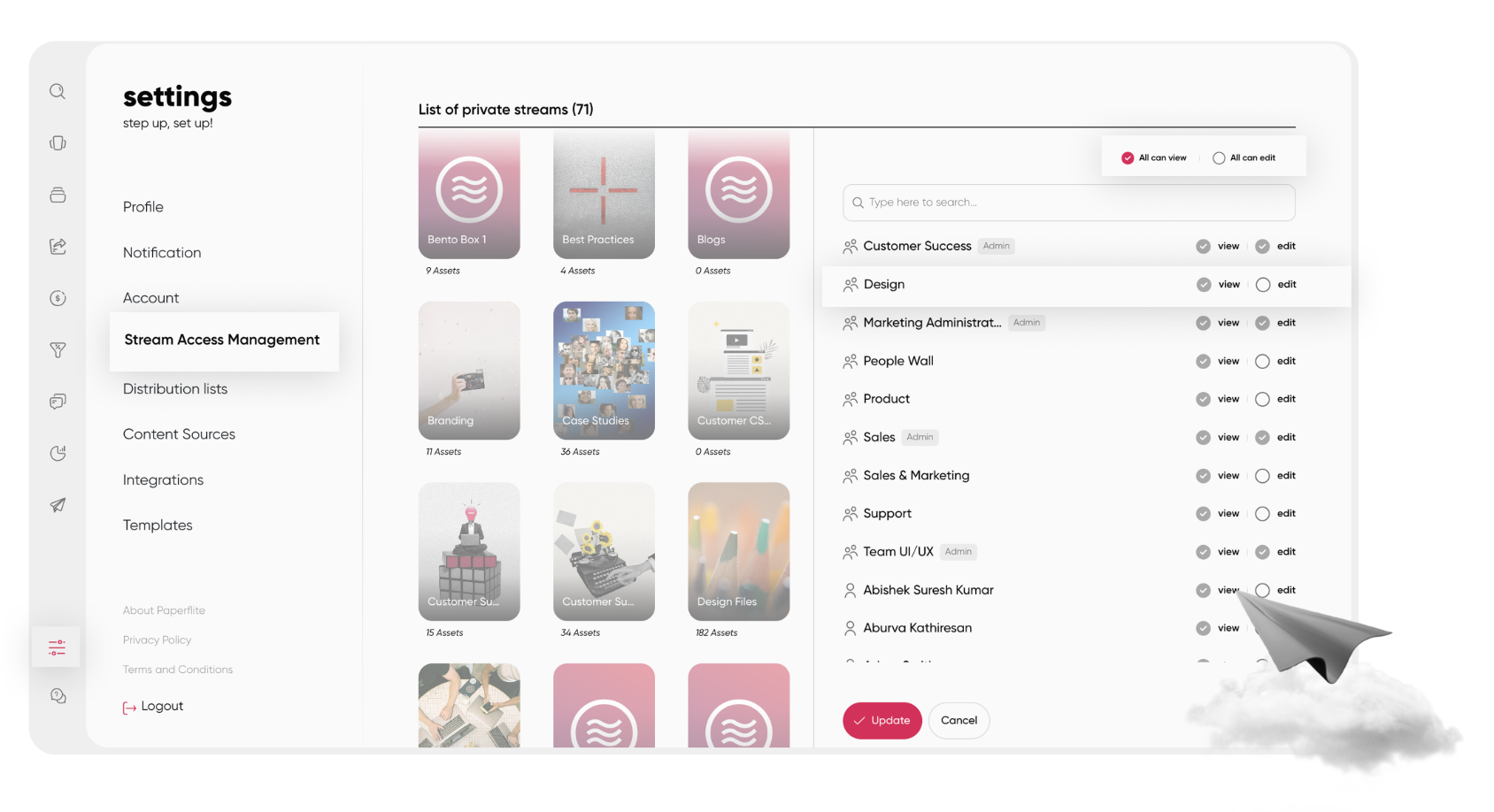
Destruction: Controlled Deletion with Policy-Based Governance
Finally, content that is no longer needed and no longer legally required is securely disposed of. This stage includes:
- Defining content expiration rules based on business policies or regulations
- Deleting content with full traceability and authorization logs
- Ensuring no sensitive or proprietary data remains accessible beyond its useful life.
How Paperflite Supports the Full ECM Lifecycle
While the enterprise content lifecycle is conceptually clear, executing it seamlessly across departments, formats, and audiences often breaks down in practice. This is where Paperflite fills the operational gap serving as a central platform that unifies lifecycle control with discoverability, security, and personalization.
Flexible Authoring and Asset Management
Paperflite doesn’t replace the tools your teams already use (like Word, PowerPoint, or Google Docs).
Instead, it works alongside them. Content can be authored, imported, and then organized through Streams and sections, allowing structured, reusable asset libraries.
This flexibility ensures your authors don’t need to change workflows—they just gain greater governance and discoverability.
Seamless Integration with SharePoint, Google Drive, Dropbox, Box
Rather than duplicating content across platforms, Paperflite integrates directly with existing repositories.
This means you can manage, tag, and distribute content from one place without losing sync with your original source systems.
Teams stay aligned, and compliance remains intact across silos.
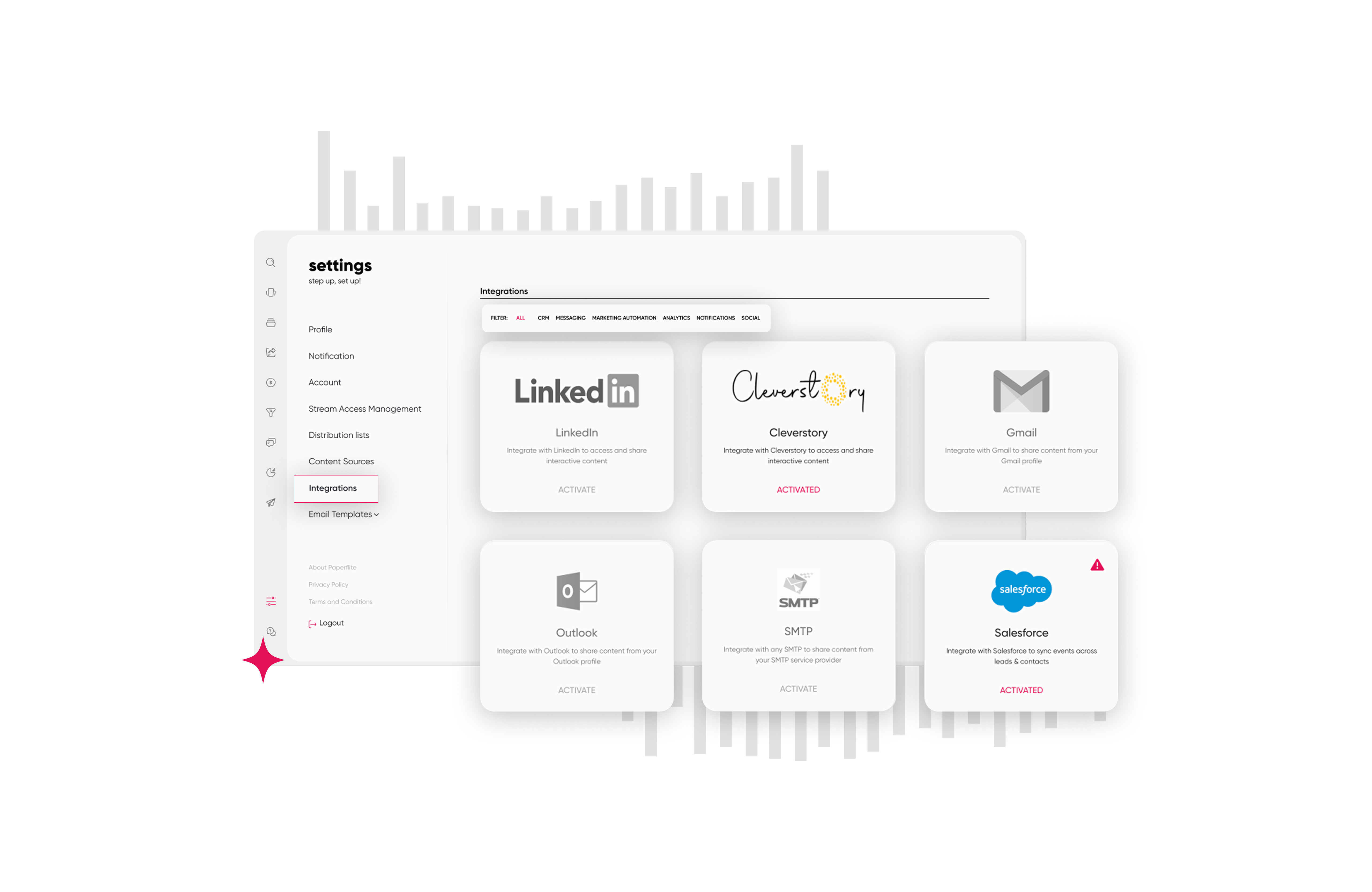
Version Control with Check-In/Check-Out
Content constantly evolves. Paperflite maintains a clear version history for each asset, ensuring teams always use the latest approved file.
This minimizes errors, supports compliance, and keeps everyone aligned—especially in fast-moving or regulated environments.
Live Collections and Personalized Sharing
Paperflite’s Collections allow teams to create curated, branded microsites that can be updated even after sharing.
For example, if you’re in the middle of a customer deal and a new product sheet becomes available, you can push it live no new email threads, no reattachment mess.
These Collections can be further bundled into Deal Rooms for multi-stakeholder collaboration.
In Action: Real-World Impact
Aspire Systems - centralized its previously scattered sales and marketing collateral, reducing content discovery time by 60% and significantly improving cross-team alignment.
E2open - leveraged Paperflite to manage multilingual, geo-specific content for their global buyer journeys—ensuring each region received contextually relevant content that met compliance needs.
Venus - used Paperflite to enable field sales teams with personalized, trackable content kits, resulting in deeper engagement and shorter sales cycles.
This section helps cement Paperflite’s role not just as a content repository, but as an end-to-end execution layer for enterprise content lifecycle management.
What are the Benefits of Managing the Content Lifecycle Proactively?
Managing content reactively means dealing with chaos old versions in circulation, wasted time searching, or non-compliance surprises.
Proactive lifecycle management flips that script. Here’s what enterprises gain:
Improved Discovery with Contextual Relevance
Content that’s buried is content that’s wasted.
Intelligent discovery tools enable users to surface insights from within documents not just from file names delivering precise, context-aware results even for complex queries.
This accelerates decision-making and empowers frontline teams.
Version Control and Document Integrity Across Geographies
Whether it’s a new compliance update or product messaging change, ensuring everyone across global offices uses the correct version is essential.
Paperflite’s asset-level history provide full clarity and prevents cross-functional misalignment.
Measurable Content ROI and Audit Readiness
Paperflite tracks how content is consumed, who viewed it, for how long, and whether it influenced outcomes.
This helps content teams identify what’s performing, optimize future assets, and demonstrate ROI.
For compliance teams, every share and interaction is logged, creating a built-in audit trail.
Streamlined Collaboration Across Marketing, Sales, and Ops
Lifecycle management breaks silos. With shared hubs, live collections, and real-time analytics, marketing can track what sales uses, sales can surface customer feedback, and ops can enforce policies.
This results in faster deal cycles, fewer compliance lapses, and greater content agility.
FAQs
What’s the difference between ECM and DMS in managing the content lifecycle?
A DMS typically handles only storage and retrieval. ECM, on the other hand, manages the full content lifecycle from creation and access to archival and secure deletion enabling governance, discoverability, and collaboration at every stage.
Can ECM lifecycle frameworks support hybrid teams?
Yes. With centralized storage, permission-based access, and secure digital sharing, ECM lifecycle systems ensure that hybrid teams can create, find, and use content without version confusion or access delays no matter where they work.
Is a full content lifecycle approach overkill for SMBs?
Not at all. SMBs benefit from ECM lifecycle practices by avoiding content sprawl early, maintaining brand consistency, and scaling operations without chaos. The structure also makes onboarding and collaboration smoother as teams grow.
How often should content audits occur in a lifecycle-managed system?
Quarterly reviews are ideal for active content. Annually, conduct a comprehensive lifecycle audit to assess archival readiness, retire outdated assets, and confirm that permissions and compliance rules are up to date.
What ROI can teams expect from lifecycle-based ECM implementation?
Enterprises that manage content lifecycle proactively see reduced compliance risk, faster content discovery, clearer usage insights, and tighter collaboration. The result is less rework, better decisions, and higher operational efficiency.
Conclusion
Managing the content lifecycle isn’t just a process it’s a competitive advantage. When content is governed from creation to retirement, it drives clarity, reduces risk, and supports consistent engagement internally and externally.
For enterprises, this means smoother collaboration, faster decision-making, and stronger compliance. For teams, it means spending less time searching and more time executing.
If your organization hasn’t evaluated its content lifecycle strategy recently, now’s the time to act. Conduct a lifecycle health check. Identify bottlenecks. Look for gaps in discoverability, versioning, and archival.
And if you’re ready to modernize, platforms like Paperflite can help offering lifecycle visibility, intelligent discovery, and seamless content experiences that scale with your business.
